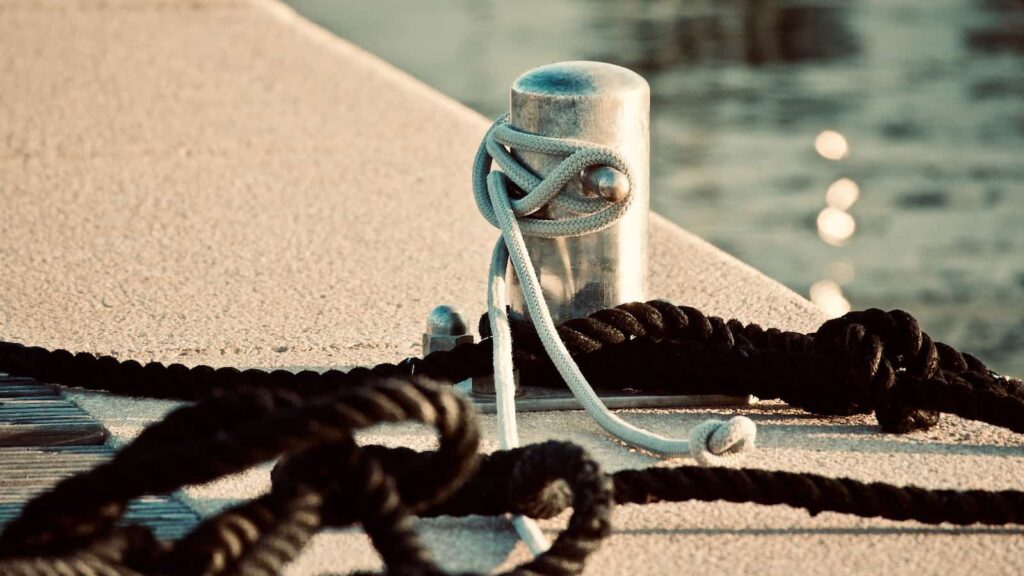How many mooring lines does your boat need?
Let’s start with the number of mooring lines: how many ropes should we have on board to ensure proper management of the berth and perform a textbook mooring? We obviously begin with the two main lines, namely the bow line and the stern line. The first is intended to secure the bow, while the second is used to tie the stern to the dock. But be careful, these lines, by themselves, allow you to stop the boat’s motion, but certainly not to secure it stably. So, in case the mooring extends beyond a momentary stop, it will absolutely be necessary to add
Types of mooring lines
There are different types of mooring lines, distinguished by the processing and internal structure of our ropes. From type to type, the price, resistance, durability, elasticity, and so on change. The most common type is the classic three-strand line, a structure that guarantees high elasticity and good durability, with the rope tending to remain flexible. Other common types are square lines, which boast similar resistance to those already described; the least performing are the standard lines, which can certainly still meet the needs of a simple mooring, but must be correctly proportioned. To have the same strength as a three-strand line, a standard line will need to have a larger diameter and be in optimal condition.
The length of the lines for your boat mooring

The thickness of the lines
As we have already seen above, the necessary thickness of the lines, i.e., their diameter, varies according to their construction: it has been said that the diameter of a standard line should always be greater than that of a three-strand line. But this is certainly not the most important data to consider: what makes the difference is the weight of our boat. Let’s think of a boat around 8 meters long, weighing 2 tons: in that case, it will be necessary to equip yourself with mooring lines with a minimum diameter of 12 millimeters, 14 millimeters in the case of standard lines. In the case of heavier boats, around 10 tons, good lines with a diameter of 20 millimeters will be necessary.
The material of the lines
We certainly haven’t forgotten another important factor to consider when choosing mooring lines. We’re obviously talking about materials. As we know, over the years, the most diverse materials have been used to make nautical ropes: once hemp, jute, sisal, cotton, and other vegetable fibers were dominant. This is not the case for modern lines, which are generally made of polyester. Among its strengths, we find its resistance in the marine environment, its softness, and robustness; however, polyester doesn’t excel in elasticity, which is nevertheless sufficient for most uses. To help, moreover, the widespread mooring springs can also come to the rescue (preferably with rubber parts, to provide sound tranquility to the marina). Less common but to be considered are nylon lines or those in polypropylene: the former excel in elasticity but lack softness over time; the latter have the advantage of buoyancy but are not to be considered for medium or large-sized boats.
Have you decided which and how many lines to buy for mooring your boat? We look forward to welcoming you to our marina in Genoa, for an easy, quick, and safe mooring!


